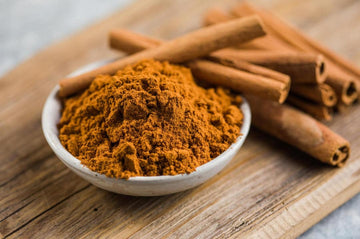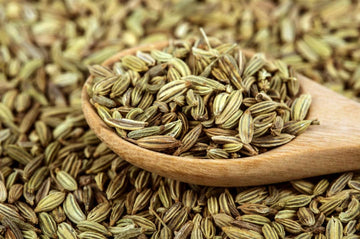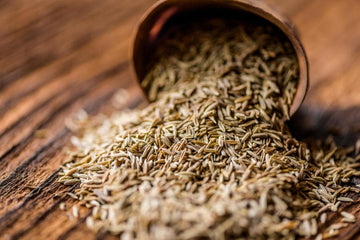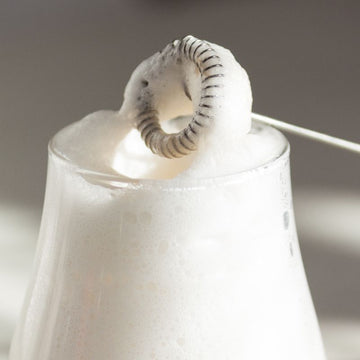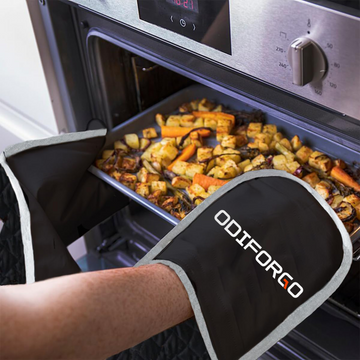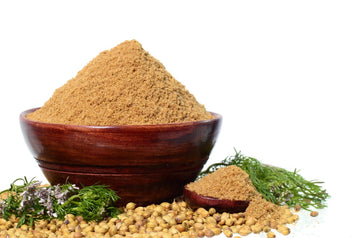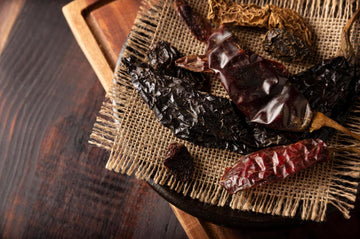Coriander spice’s been popular in many parts of the world for centuries. The kind you find in the States labeled as “coriander” usually refers to the dried seeds of the coriander plant. It has a distinct, warm, citrusy flavor. It’s mild but noticeable. And a texture that’s gritty when whole, turning almost powdery when ground. It’s the kind of spice that blends into a dish without overwhelming it, but you'd miss it if it were gone.
In this article, we’ll talk about what coriander actually is, what it tastes like, and how to use it. We'll also cover coriander seeds, substitutes you can get away with, and where to buy the real thing if you want to cook with it properly.
What is coriander spice?
Coriander comes from the plant Coriandrum sativum, which is part of the parsley family. In most spice aisles, “coriander” refers to the dried seeds of the plant, while the fresh leaves are labeled as cilantro. The entire plant is edible, but it’s the seeds we’re focusing on here.

The spice has a mild, slightly sweet flavor with notes of citrus and a bit of warmth. It’s not sharp or spicy like chili or pepper. It’s more of a background player that helps blend and balance other flavors.
Coriander is a staple in Indian, Middle Eastern, Latin American, and Mediterranean cuisines. You’ll find it ground into curry powders, sprinkled into marinades, and used whole in pickling brines or to season meats. It works with both savory and sweet dishes, though it’s more often used in savory recipes.
Culturally, coriander’s been around for a long time. References to it show up in ancient texts from Egypt, Greece, and Rome. And it’s still in heavy rotation today for a reason: it does its job without demanding attention.
What does coriander spice taste like?
Coriander seed has a flavor that’s warm, slightly sweet, and citrusy. Some describe it as having a subtle nutty note, with a trace of orange peel or cardamom. It’s not a sharp spice, nor is it spicy in terms of heat. It’s mellow, rounded, and often used to balance out bolder, more pungent ingredients like cumin, chili, or garlic.
The whole seeds are often toasted to bring out their essential oils and deepen the flavor before being ground or added directly to recipes. Ground coriander is convenient and more commonly used in Western kitchens, while whole seeds are a staple in many traditional spice blends.
Coriander spice works well in a wide range of savory recipes. It’s a core ingredient in spice blends like garam masala, ras el hanout, curry powder, and pickling mixes. You’ll find it in:
-
Indian curries and dals
-
Middle Eastern meat rubs and rice dishes
-
North African stews like tagines
-
Latin American marinades
-
Homemade sausages and spice rubs
-
Pickling brine for vegetables
-
Even some baked goods and liqueurs for a hint of citrusy warmth
If a recipe calls for a spice that’s earthy but not bitter, or something to balance acidity or spice, coriander is often the answer.
Substitutes for coriander spice

If you’re out of coriander seeds or simply don’t enjoy their flavor, several spices can fill in, depending on the recipe. The goal is to find something with a similar warmth, citrusy lift, or mild sweetness. Though no substitute is a perfect match, some come closer than others.
Common pantry substitutes
Cumin is one of the easiest go-to options. It’s earthier and more pungent than coriander, but it often appears alongside it in spice blends, so using cumin on its own won’t throw off a dish entirely. Adding a touch of lemon zest can bring back the citrus note that cumin lacks.
Caraway seeds are another household-friendly option. They share a similar flavor profile with coriander, characterized by a mildly sweet, warm, and aromatic profile. They’re especially suitable for breads, stews, and meat rubs.
If the coriander was meant to add brightness or a slight herbal tone, try using fennel seeds, though they are more licorice-forward. When ground, they can add a surprising layer of complexity to the dish.
Uncommon but closer alternatives
If you have access to them, dried coriander leaves (sometimes sold as "dried cilantro") can work in a pinch for light broths or dressings, though they lack the intensity of the seed.
Another closer match in flavor is grains of paradise, a less common spice from West Africa. It’s peppery with citrus undertones. It’s not identical to coriander, but similar enough in certain spice blends to do the job without jarring the recipe.
Lastly, fresh coriander seed alternatives like ajwain (carom seeds) or lovage seeds are niche but worth noting if you're recreating traditional recipes that depend on coriander's unique blend of citrus and spice.
Whatever substitute you choose, it's best to adjust gradually, taste as you go, and consider what role coriander was meant to play in the dish. Consider base flavor, background warmth, or bright citrus lift before committing to a replacement.
How to use coriander spice?
Coriander seeds are typically used either whole or ground, depending on the dish. When left whole, they can be toasted to bring out their nutty, citrusy aroma, then added to curries, pickles, and stews. Ground coriander is more commonly used in spice blends and seasoning rubs, especially in recipes where you want the flavor to evenly coat or mix into other ingredients.
These seeds are essential in cuisines around the world. In Indian cooking, they’re found in countless dishes like chana masala, sambar, and various curries. You’ll also find them in garam masala, one of the most widely used spice blends in South Asian kitchens.
In Middle Eastern recipes, coriander is used in dishes like falafel, kebabs, and lentil stews. In Latin American cuisine, it can appear in adobo spice blends or as part of a meat marinade. Even in European pickling recipes, coriander seeds often play a background role, lending their warm citrus notes to brines and vinegars.
Coriander seeds add depth without overwhelming the dish. It includes dishes dry-roasted, simmered in broth, or ground into a blend. Making them a quiet but essential spice in many of the world’s most recognizable meals.
Small seed with lots to offer
Coriander spice in a dish is anything but. Trying a new curry recipe? Or a homemade soup or rub? Coriander spice adds a distinct flavor to all the dishes. It offers a subtle brightness and warmth that's hard to replicate.
You won't regret keeping some coriander seeds in your pantry. Not just as a backup, but as a staple worth reaching for more often.
FAQs
Is coriander a spice or an herb?
It depends on the part of the plant you’re using. When we talk about coriander spice, we’re referring to the dried seeds of the coriander plant that make it a spice. However, the leaves of the same plant are called cilantro, which is used as an herb. So technically, coriander is both a spice and an herb, depending on the form.
Where can I buy coriander spice?
Coriander seeds and ground coriander are widely available. You’ll find them in the spice aisle of most supermarkets, usually sold in jars or packets. For fresher, more aromatic seeds, check international markets, especially those focused on Indian, Middle Eastern, or Latin American ingredients. Specialty spice shops or online spice retailers are also good places if you’re looking for organic or single-origin coriander.
Can I use cumin instead of coriander?
No. They’re not perfect substitutes. Cumin is earthier and more pungent, whereas coriander has a lighter, citrusy flavor. If you’re out of coriander, a mix of caraway, fennel, or a dash of lemon zest with cumin can help mimic the flavor more closely.
Is there a difference between coriander seeds and ground coriander?
Yes. Ground coriander is simply the powdered form of the seeds. Whole seeds last longer in storage and can be toasted for some extra aroma before grinding. Ground coriander offers convenience but loses its potency faster. That's why it’s best to store it in a cool, airtight container and use it within a few months.
